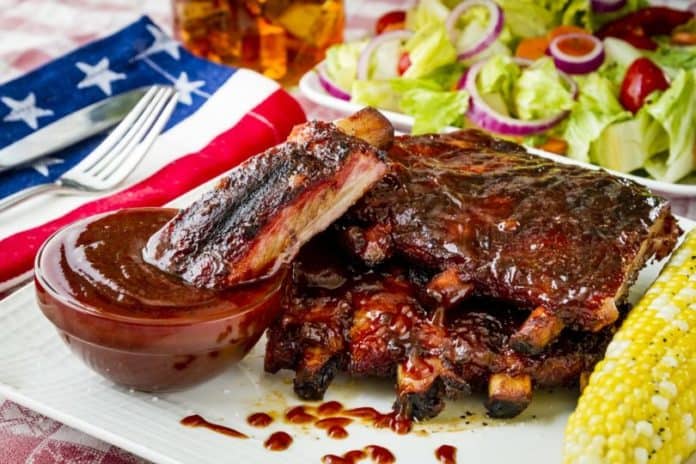By Gig Conaughton, County of San Diego Communications Office
The Fourth of July is upon us, and as they say, now we’re cooking!
So, remember—cook safely.
The Fourth of July means celebrations, get-togethers with families and friends, barbecues, and lots and lots of cooking.
And nobody wants a bellyache, or worse, a foodborne illness, because bacteria like salmonella, listeria or E. coli crashed your party.
So, here are five helpful tips from the County’s Department of Environmental Health to help you keep your celebration delicious and safe: Plan Ahead, Clean, Separate and Chill.
PLAN AHEAD
•Before you start cooking, decide how much food you can safely serve. For example, figure out how much cooking and refrigerated space you have to work with. You don’t want meats and perishables (like Aunt Kathy’s egg salad) sitting out—either on the counter at room temperature or outside in the heat—where bacteria can grow quickly. Remember: keep hot foods hot and cold foods cold.
•If you have to defrost meats, fish or poultry, give yourself enough time to safely defrost them slowly in your refrigerator. (Defrosting in the open air or in still water spurs bacterial growth.)
•Have your meat thermometer ready and use it.
•Always buy food from a safe source, such as a market or restaurant.
CLEAN
•Don’t let bacteria into your meal. Wash your hands before and after handling food, or when switching tasks or food types.
•Thoroughly rinse raw fruits and vegetables.
•Wash and sanitize counters, food prep areas, cutting boards and the equipment you’re using before and after preparing the different parts of your meal.
SEPARATE
•Keep fruits and vegetables separated from raw meat products.
•When defrosting meats and poultry, put them on a plate or pan at the bottom of your refrigerator to safely thaw so that they don’t drip on other food.
•Use separate cutting boards for meat and produce such as fruits and vegetables. If you can’t, cut your produce before cutting meats and make sure you thoroughly wash your cutting board between uses with hot, soapy water.
COOK
•When you’re cooking meat, always use your meat thermometer to make sure the meat is being thoroughly cooked inside and out. This can be especially important if you’re barbecuing because meat and poultry brown fast on a grill and look like they’re thoroughly cooked before they’re actually cooked properly on the inside. Ground meat and sausages, poultry, beef, pork and ham roasts all require different safe cooking temperatures.
Based on federal food code regulations designed to ensure that food is cooked enough to kill any bacteria present, ground beef and sausages should be cooked to an internal temperature of 160 F; poultry to 165 F; and beef, pork and ham roasts to 145 F (and allowed to rest for 3 minutes to continue cooking). Here are links to more comprehensive internal cooking guides from the United States Department of Agriculture and FoodSafety.gov.
CHILL
•Keep cold foods cold—keep meat and poultry refrigerated until you’re ready to cook. If you’re barbecuing, keep it refrigerated until you’re ready to put it on the grill. When you’re using a cooler, don’t place it in direct sunlight; keep it in the shade. Open the cooler only when you have to, because doing so lets the cold air out and warm air in. Put beverages in one cooler and meats, poultry and other perishables in another.
For more information and food safety tips, go to the U.S. Department of Agriculture (USDA) Food Safety and Inspection Service’s Food Safety Education Web page or call the USDA Meat and Poultry Hotline at 1-888-674-6854.
Gig Conaughton is a communications specialist with the County of San Diego Communications Office


















